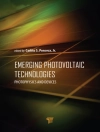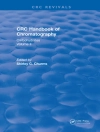In ‘The Chemical History of a Candle, ‘ Michael Faraday masterfully interlaces scientific inquiry with eloquent prose, offering an accessible yet profound exploration of the combustion process and the nature of matter as demonstrated through the simple candle. This work, delivered as a series of illuminating lectures, employs straightforward analogies and everyday phenomena to engage a broader audience in the wonders of chemistry. Faraday’s vivid descriptions and methodical observations place the candle at the center of a scientific narrative, unraveling the complexities of chemistry in a manner that emphasizes empirical understanding and the beauty of scientific discovery, set against the backdrop of the 19th century’s burgeoning interest in the natural sciences. Michael Faraday, a seminal figure in the field of electromagnetism and electrochemistry, was largely self-taught, reflecting an insatiable curiosity and a dedication to the acquisition of knowledge. His background as a humble bookbinder allowed him to cultivate a fascination with science through literature, sparking a desire to bridge the gap between complex scientific ideas and the general public. ‘The Chemical History of a Candle’ emerged from his desire to inspire wonder and understanding in the scientific miracles of everyday life. This book is highly recommended for anyone seeking to deepen their appreciation for the interplay of physics and chemistry, as well as for those interested in the historical context of scientific thought. Faraday’s unique ability to engage and educate through accessible language makes this work a timeless resource, inviting readers to ponder the intricate wonders illuminated by the flicker of a candle.
A propos de l’auteur
Michael Faraday (1791–1867) stands as one of the most influential scientists in the history of chemistry and physics, renowned for his groundbreaking work in electromagnetism and electrochemistry. While Faraday received little formal education, his insatiable curiosity and intellectual prowess propelled him from the status of a bookbinder’s apprentice to one of the most acclaimed experimental scientists of his time. Faraday is perhaps best remembered for his discovery of electromagnetic induction, the principle behind the electric transformer and generator. However, Faraday’s contributions to scientific knowledge are not restricted to his experiments with electricity. He was also an exceptional lecturer and writer, as demonstrated in his work ‘The Chemical History of a Candle’. First published in 1861, this collection of lectures exemplifies Faraday’s unique ability to convey complex scientific concepts in an accessible and engaging manner. The work reflects Faraday’s keen observational skills and his talent for linking the behavior of a simple candle flame to fundamental principles of chemistry and physics. Through his insightful lectures and writings, Faraday not only advanced scientific understanding but also greatly contributed to the popularization of science, making it more accessible to the lay public. His style, characterized by a blend of rigorous empirical investigation and a clear, straightforward exposition, has set a standard for scientific communication that endures to this day. Even beyond his literary contributions and scientific discoveries, Faraday’s humble character and ethical standards left a lasting impression on the scientific community and society at large.












